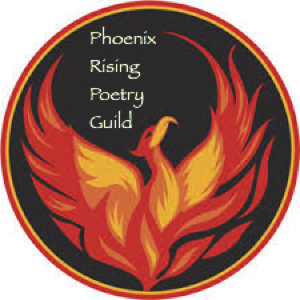These pages are “learn as you go”. It is not to say these are new “lessons”. They are more of a refresher course. And of course, those who make a habit of being “free-spirited” and steer away from rhyme, have challenged themselves in these exercises and of that I am most grateful of the efforts being made. You ladies and gentlemen are awesome/awe inspiring!
This week, we will concentrate on specific poetic forms that rely heavily on rhyme or have it woven into certain rhyme patterns with great effect. These will include: Alouette, Constanza, Dizain, Rondeau and Triolet. More examples and more concise reviews of these forms can be found at the Poetic/Creative Bloomings link here:
http://poeticbloomings.com/poetic-bloomings/in-form-poet/
ALOUETTE:
The Alouette was created by Jan Turner.
It consists of two or more stanzas of 6 lines each, with the following set rules:
Meter: 5, 5, 7, 5, 5, 7
Rhyme Scheme: a, a, b, c, c, b
“Alouette” is a French word, which means ‘skylark’, and this form is reminiscent of the lark’s song-like expression as presented here. The word ‘alouette’ can also mean “a children’s song” (usually sung in a group). This poetry form is not necessarily for children’s poetry (although can be applied that way), as it works through that style with short lines.
CONSTANZA:
The Constanza, created by Connie Marcum Wong, consists of five or more 3-line stanzas. Each line has a set meter of eight syllables. The first lines of all the stanzas can be read successively as an independent poem, with the rest of the poem weaved in to express a deeper meaning. The first lines convey a theme written in monorhyme, while the second and third lines of each stanza rhyme together.
Rhyme scheme: a/b/b, a/c/c, a/d/d, a/e/e, a/f/f………etc.
DIZAIN:
Ten lines rhymed; usually (though not by definition) iambic pentameter. This is originally a French form and initially would have been made up of eight syllable lines, but later ten syllable lines were also used. The few examples of this form in England did prefer Iambic Pentameter, but that’s purely up to the poet.
The rhyme scheme is: a-b-a-b-b-c-c-d-c-d.
RONDEAU:
A rondeau (plural rondeaux) is a form of French poetry with 15 lines written on two rhymes. It makes use of refrains, repeated according to a certain stylized pattern. It was customarily regarded as a challenge to arrange for these refrains to contribute to the meaning of the poem in as succinct and poignant a manner as possible. The rondeau consists of thirteen lines of eight syllables, plus two refrains (which are half lines, four syllables each).
The traditional rondeau looks like this:
A-A-B-B-A
A-A-B-A(R)
A-A-B-B-A-A(R)
TRIOLET:
The triolet is a very brief, tightly rhymed poem that, like the pantoum, takes part of its structure from the repetition of entire lines. A triolet is eight lines, as follows:
1st line A
2nd line B
3rd line a (rhymes with A)
4th line A (entire 1st line repeated)
5th line a (rhymes with A)
6th line b (rhymes with B)
7th line A (entire 1st line repeated)
8th line B (entire 2nd line repeated)
Using one of these forms (or as many as you feel fit to write), allow the rhyme to drive your poems. Although we are working with rhyme this month, the form becomes important this week. And in seeing that we welcome Spring by the end of the week and say goodbye (somewhat) to Winter, we will be writing to one of these topics: A Farewell Poem, A Birth or Rebirth Poem, or a Poem about returning to something. All in good form!

